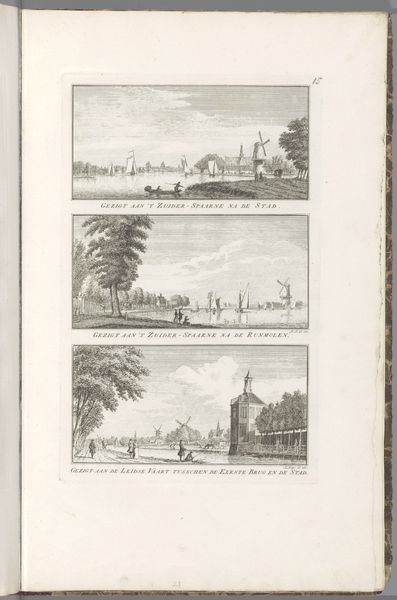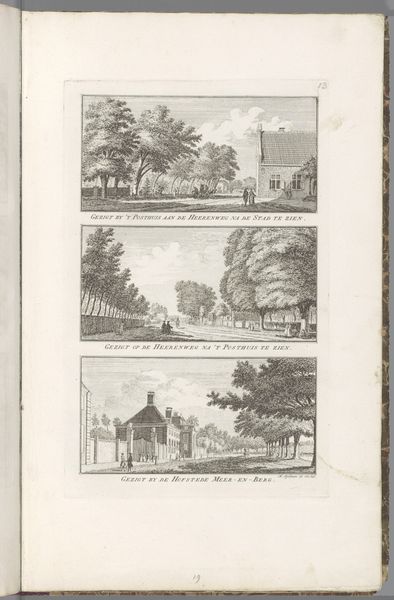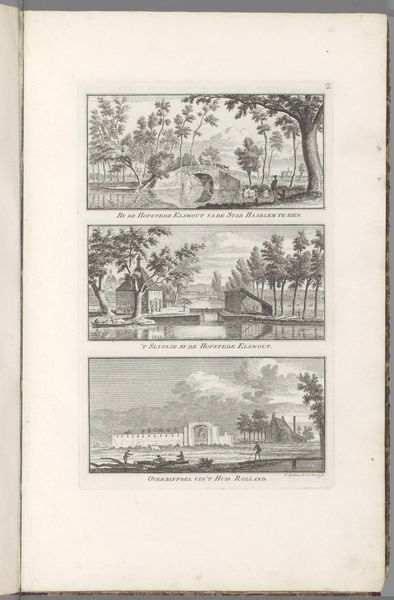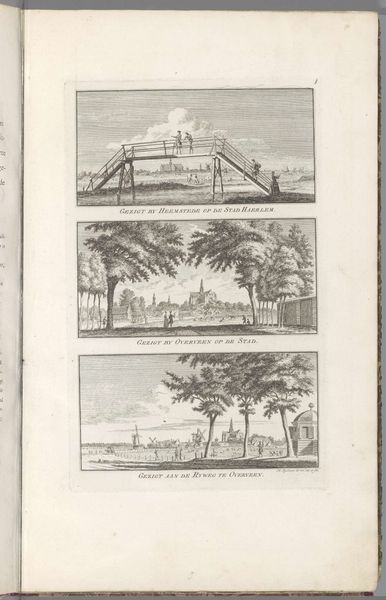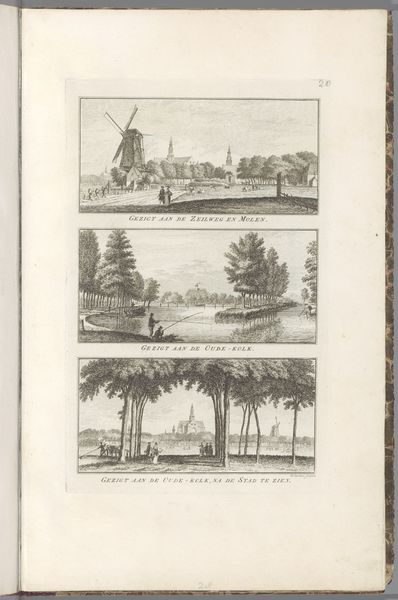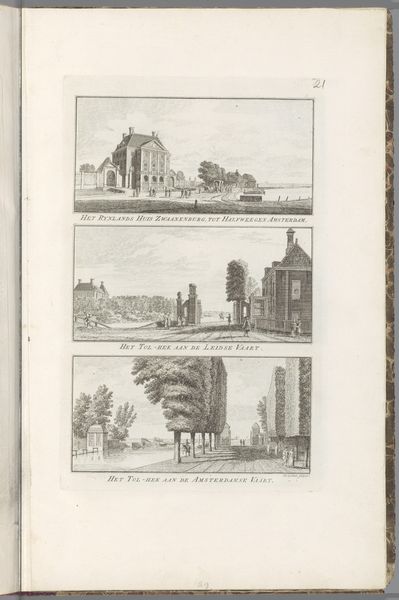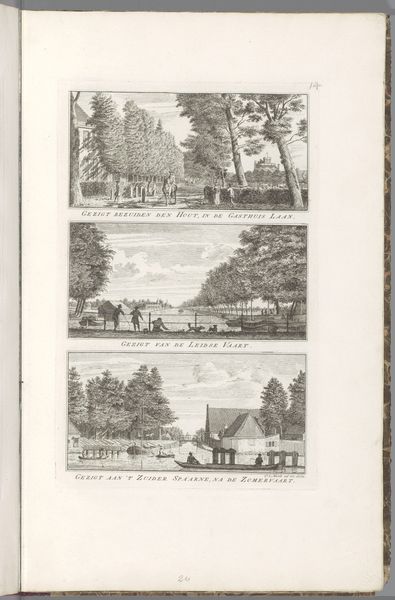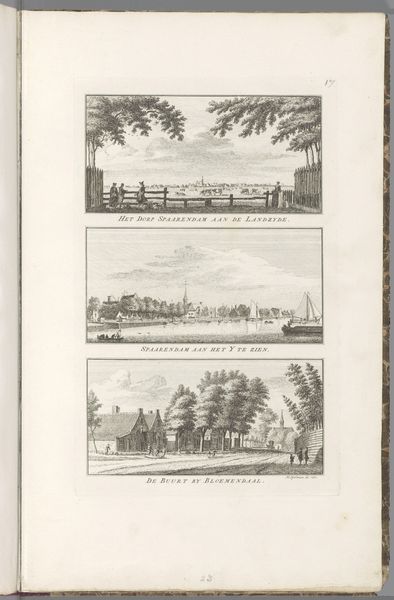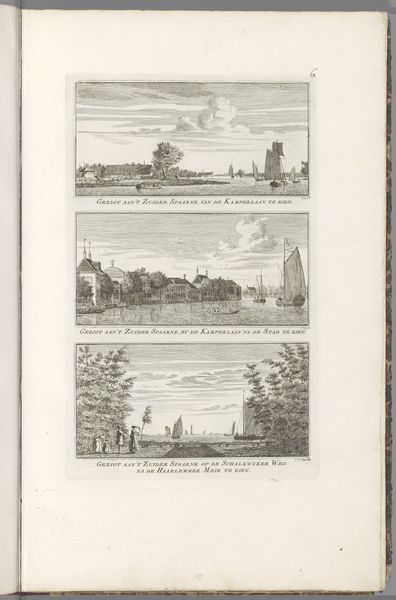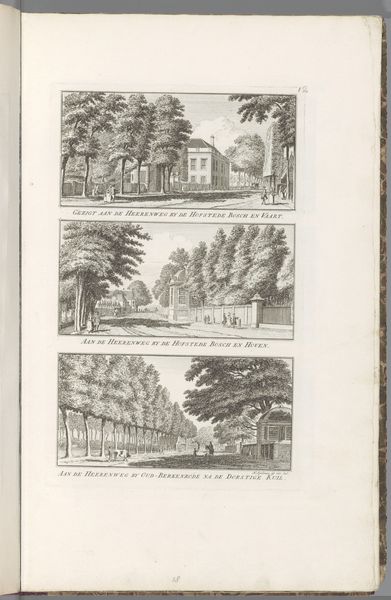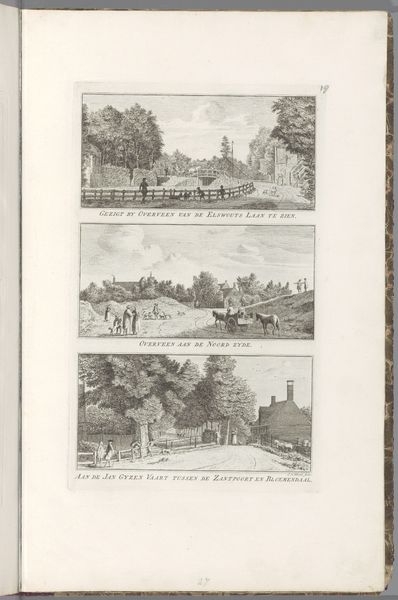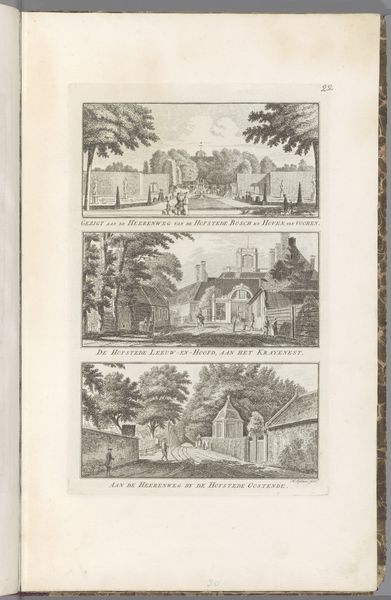
Dimensions: height 297 mm, width 188 mm
Copyright: Rijks Museum: Open Domain
Editor: This is Hendrik Spilman's "Views of the Spaarne and Huis ter Kleef," an etching dating from between 1761 and 1763. It feels very documentary, almost like an architectural record. I am curious, how does an image like this function within its historical moment? Curator: Good observation! What we see here is not simply a landscape, but a carefully constructed visual argument about civic identity and power. These prints circulated widely, shaping how people understood their place within the Dutch Republic. Editor: So, these images played a role in constructing identity? Curator: Absolutely. Think about it: the choice of the Spaarne River, a vital waterway for trade, and the inclusion of Huis ter Kleef, once a symbol of noble power, now in ruins. What story do you think Spilman is trying to tell by presenting these views together in this way? Editor: Perhaps the decline of the old aristocracy and the rise of a new, mercantile class? The Spaarne represents their power, their livelihood. Curator: Precisely! And note the objective style of the etching – the even lighting, the precise detail. It lends an air of authority and truth, reinforcing the idea that this is a factual representation of a changing social order. It asks us to reconsider who and what holds authority in society. Editor: It's fascinating to consider how this image, seemingly simple, is deeply embedded in the social and political landscape of the time. Thanks for your insights. Curator: My pleasure. Analyzing art through the lens of history makes for richer experiences!
Comments
No comments
Be the first to comment and join the conversation on the ultimate creative platform.

